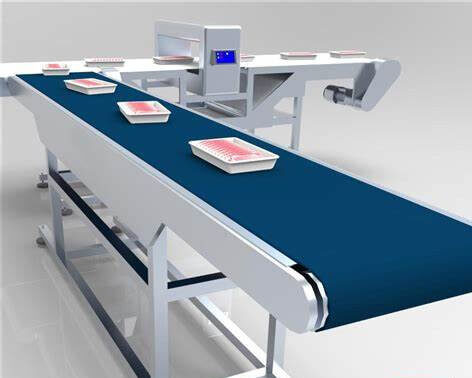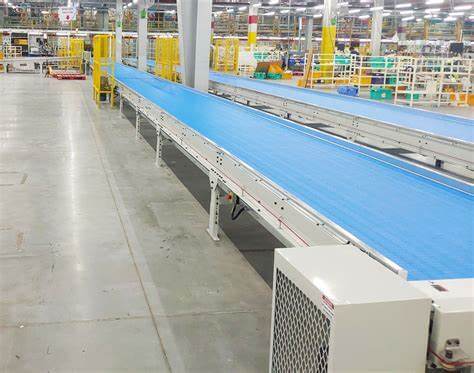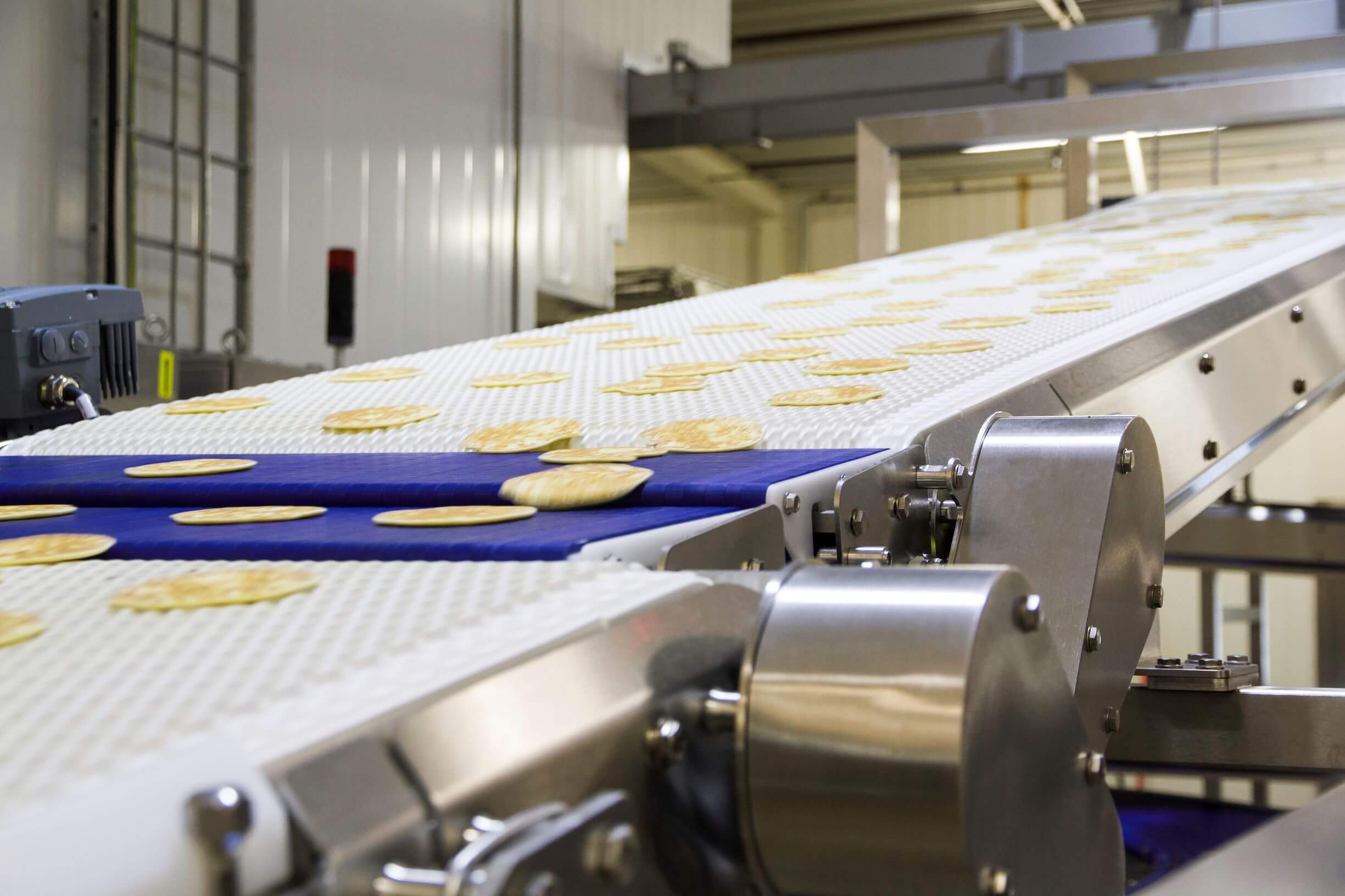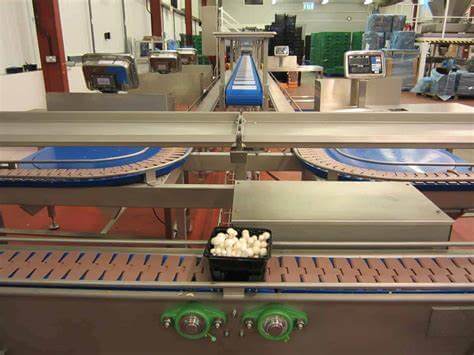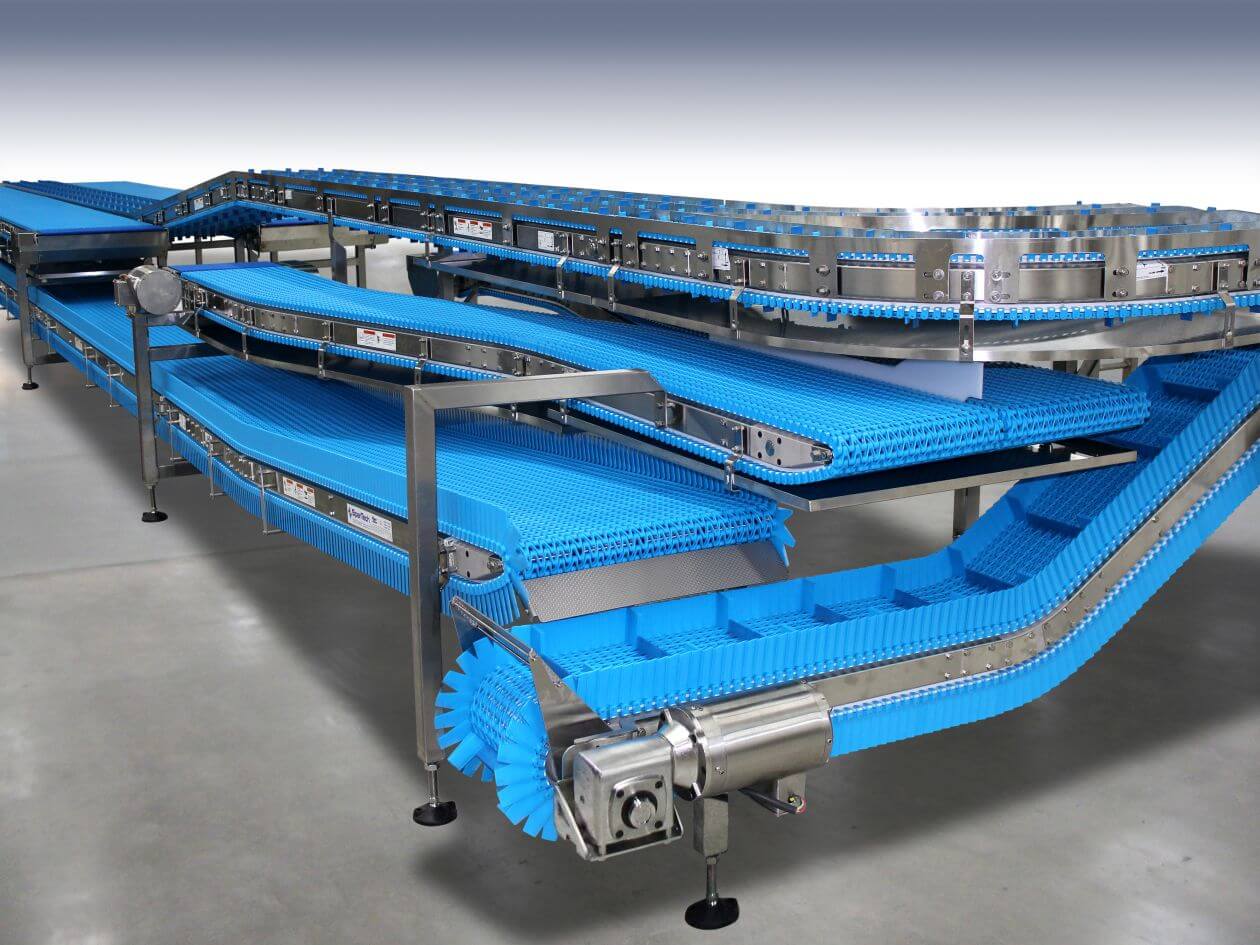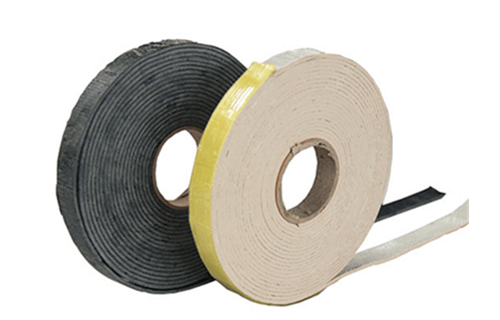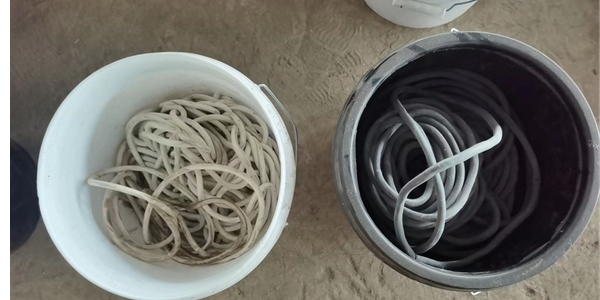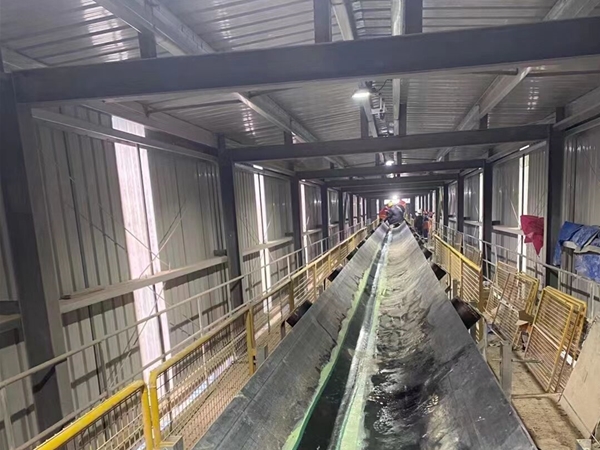If your conveyor belt does not work properly, it will have an immeasurable impact on your entire system. The entire operation may be delayed, resulting in loss of capital and productivity.
To prevent this from happening, you need to pay close attention to the precise work of the conveyor belt. By carefully observing and checking your belt, you can catch many problems before they develop into larger problems that require time and money to solve.
No matter how careful you are, errors will still occur, and components and equipment will eventually be damaged. When this happens inevitably, it is important to know how to resolve the complications that arise.
You should be aware of how conveyor belt maintenance is performed, what problems are common, and how to fix them. This information will help you keep your conveyor belts running smoothly and prevent them from crashing due to preventable problems.
1. Conveyor belt common problems
Although it is impossible to list all the bad situations you encounter on the conveyor belt, these are some of the problems you are most likely to face and the consequences they may bring.
- Conveyor belt Mis-tracking
- Conveyor Blet Slipping
- Grasp the roller
- Blockage
- Material leakage
In addition to learning more about the most common problems of conveyor belts, learn:
- How to prevent them
- Maintain safety measures
- When to contact a professional
1.1 Conveyor belt Mis-tracking
This problem occurs when there is a belt tracking problem. Tracking is the process of managing and adjusting the conveyor belt to the correct path. It is the key to ensuring the smooth operation and output of the system. “Mistaken operation” means that there is a problem on this track. In most cases, this means that the conveyor belt has slipped to one side or the other, and the entire system has deviated from its direction.
Wrong operation can lead to many negative consequences. It may deviate the entire system from the established track. But the consequences may not be so extreme. Mishandling may just cause uneven belt wear, which is the cause of a whole host of other problems itself.
If the conveyor belt is completely off the track, the entire system will malfunction and shut down. It’s best to pay attention to the small signs of missed hits, even if they don’t seem to cause much damage. By detecting this problem early, you can prevent it from getting worse and creating bigger problems.
Troubleshooting for Conveyor Tracking
You need to do a small conveyor belt calibration troubleshooting when the belt starts to track from side to side, showing frayed edges. Conveyor tracking problems can originate from different parts of the system. Once your belt starts to go wrong, look at these potential problems:
1) Conveyor belt frame: If your conveyor belt frame is bent or inclined, it may mislead your belt. Check your frame from all angles to make sure it is horizontal and square.
2) Roller buffers: These rollers keep belt tension more even as they are in contact with all the pulleys in the system. Tension is essential for tracking, so your cushion roller should be aligned with your frame and apply enough tension to the belt.
3) Cut the belt: The conveyor belt will be cut wrong during the manufacturing process, causing the conveyor belt to bend. No matter how well the rest of your system works, a bent belt can cause tracking errors.
4) Cleaning: Debris on the belt and pulley will cause the belt to swing in one direction or another. Ensure that all parts of the conveyor are clean to ensure smooth operation and prevent malfunctions.
5) Fake crown: The conveyor belt moves various items, and sometimes the material gets stuck or stuck on the pulley. You can find the crown in the center of the end pulley, which distributes the force to each side of the belt to help it stay on the track. If a piece of debris gets stuck on another pulley, it can create a fake crown and redistribute the weight to where you don’t need it. Check that your pulley is free of debris to avoid this.
1.2 Conveyor Blet Slipping
Conveyor belts rely on precise tension balance to work correctly. If the tension is too high or too low, things start to go wrong and the belt will slip off. Specifically, if the head pulley is damaged or even becomes excessively worn, there will no longer be enough tension to keep the belt from sliding around.
This loss of tension can cause unnecessary stretch and tension on the belt, as well as loud, harsh and squeaking noises and the aforementioned slippage. Repairing such problems will require a lot of time-consuming maintenance. To avoid this situation, the various parts of the conveyor belt should be checked regularly to ensure that there is no undue wear.
The main reason for conveyor belt slippage
Since tension and balance play a big role in belt operation and traction, there are several common reasons for belt slippage. Once you are aware of the underlying cause, you can pay close attention to the problem area to prevent landslides in the future. Common reasons include:
- Your conveyor belt can only handle so much weight based on its pulley and overall size. If you try to carry a very heavy object, your belt will usually slip out of the pulley instead of working properly. Make sure the items you use on the belt fit the weight range of the belt.
- Low temperature. If you work in a colder environment than usual, this may affect the traction of the conveyor belt. The lower temperature will reduce the grip between the belt and the pulley, causing the belt to slip. If you often work in a cold environment, please choose a belt that can withstand low temperatures.
- Poor installation lag. Although incorrect belt tension results from a variety of problems, lag usually solves these problems. The lag on the pulley is to improve grip with the belt, but if this lag is installed improperly, you may still experience slippage. If you are not sure how to install the pulley to lag yourself, consult a professional.
- Problems with pulleys. Pulleys are a common source of tension problems. Worn heads or accumulated pulleys will reduce the grip of the belt, just as the pulleys are too smooth. Actively checking pulleys for signs of wear is the best way to prevent pulley problems.
- When your conveyor belt keeps slipping, it will disrupt your daily operations and productivity. If you know the underlying causes, you can prevent them before they happen. It is helpful to check the machine regularly, especially the pulleys, as they often cause belt slippage.
1.3 Seized Rollers
In most cases, conveyor belts are made of metallic materials, such as steel. This structure is good because it means that the components are generally highly durable and long-lasting. As a result, the conveyor belt rollers sometimes develop sharp edges when they get stuck when running.
These sharp edges, in turn, can have a major impact on the entire conveying system. They can cause the conveyor belt to be unevenly misaligned on the center line of the conveyor belt. There are several reasons for this situation. First, it can pose a major safety hazard to any worker close to the conveyor belt. Secondly, it may damage the product and sometimes cannot be repaired once it has been damaged on the conveyor belt.
If the problem is serious enough to cause the entire system to malfunction and shut down, it may take a long time to repair the system. In order to prevent this, make sure the rollers are checked frequently.
1.4 Blockage
Conveyor belt systems have the primary purpose of transporting items efficiently, typically in complex transportation systems. Only when this efficient travel is disrupted, the entire system will stop working.
A package is too easy to be caught. When this happens, the next item behind the first item will be caught, and then the chain collision will start from there. This may cause the entire system to become clogged and clogged.
Although random occurrences are difficult to predict and usually impossible to prevent, there are many things you can do to prevent preventable blockages. Check your conveyor belt carefully for sharp edges, surfaces, corners, or other places that might get stuck when items pass by. Remember, even if it doesn’t seem like a big deal now, it’s best to deal with it while it’s still young. Otherwise, it may quickly become more complicated.
1.5 Material Carryback
Although clogging is the result of the package being caught by sharp edges and blocking other products, material carrying involves the material itself that has accumulated on the belt. If you are using materials such as clay or mineral ores, they may leave a small amount of residue. Although it doesn’t look like a lot, this material will increase and cause accumulation under your belt, causing problems with your rollers and pulleys.
This kind of harness can also cause safety problems on the road, because excessive accumulation of materials may cause fires, and certain materials can be dangerous if inhaled frequently. In addition, there is also a loss of profit related to repurchase. If you are using high-profile materials and you lose a little bit on the transmission line each time, then you may lose a considerable profit.
In order to reduce the carrying of materials, you should install a cleaning system to scratch your belt to ensure that no material falls.
1.6 Material leakage
It is quite common that there is some problematic material spilling at a certain point along the conveyor system. This term refers to any material that accidentally slips off or overflows the belt, which is the most common transfer and loading point along the way. This condition is not necessarily due to a mechanical failure or belt problem, but it can still be a problem because the spilled material may cause clogging or accumulation, which will create a domino effect and cause other problems.
If you find that material spillage is a common factor on your conveyor belt, try installing an impact bed, skirt clip or belt plow. These solutions will help reduce wasted materials and time spent cleaning, and will reduce the possibility of failure due to clogging.
1.7 Belt tear and seam tear
Depending on the product you are moving, your belt may be perforated or torn. Moving products such as sharp rocks or coal will increase the chance of this happening. Even excessive friction when handling heavy packages can cause the spots to become thinner and eventually lead to tears. Over time, the pressure and tension on the belt can also cause cracks. Due to the nature of surgery, tears and tears are difficult to prevent, so this problem requires a good repair process.
Torn belts or cracks can cause problems with your belt function and affect work efficiency. It is important to contact a professional or have a well-trained team member perform repairs to reduce downtime.
2. How to repair a torn conveyor belt
There is a wide range of solutions to conveyor belt problems, and you can consider repairs. These repairs depend on the material of the belt, your industry and how much space your operation has.
The three methods of repairing conveyor belt seams are:
1) Vulcanization: This process uses pressure and heat to repair cracks on the belt. This is the most reliable repair method, suitable for thermosetting rubber tape and thermoplastic tape.
2) Metal fasteners: This repair method is the most common DIY method because it is fast and simple. By using metal fasteners, you can basically sew your waistband together. Although this is a quick fix, it is not reliable and will not last as long as vulcanization. Additionally, fasteners are especially dangerous for the food industry because they can fall off and join the production line. Use this method as a backup option or temporary repair before curing.
3) Cold curing: This method is also called cold curing and is often used for scratches or scratches on the belt. It consists of a cement made from a base compound and a curing agent, which is used like a paste. This type of repair is usually used for space-constrained operations and cannot accommodate conventional vulcanization equipment.
3. How to prevent conveyor belt problems
The best way to keep the conveyor system running smoothly is always to prevent problems before they happen. This plan requires you to be vigilant at all times and requires you to regularly check your body system for any excessive wear or slight abnormalities.
Here are some of the most important things you can do to keep your system running smoothly.
- Check for metabolites
- Clean the body system regularly
- Make sure the frame is square and horizontal
- Make sure the end pulley is even
- Check whether the belt is cut straight
- Keep the idler running smoothly
- Replace any worn parts
3.1 Check for Buildups
As part of your routine inspection of the conveyor belt, you should complete a routine cleaning inspection. Check your entire system carefully, from top to bottom, side to side, and every way you can think of. Look for dirt, debris, or any residue. Wherever you find these types of accumulations, remove them as thoroughly as possible.
Debris is a common cause of belt mis-tracking, it may cause incorrect seat belt alignment, or it may cause your system to jam.
3.2 Clean the body system regularly
This process is closely related to the inspection construction. However, if you clean regularly, you can reduce the possibility of accumulation from the start. Get in the habit of cleaning the conveyor system regularly. This way you are more likely to detect problems early and prevent any problems caused by the accumulation of dirt or excess material.
3.3 Make sure the frame is square and horizontal
If te entire system inclines or deviates from a straight line at an unusual angle, it will be difficult for your conveyor to operate normally, which may simply be caused by the regular movement of the machine and any other factors. It may even happen when the system is readjusted to transport different products or materials.
It is necessary to check regularly to ensure that the conveyor rack is neat and everything is correct. You can easily pass the standard level and check to make sure the sides are even.
3.4 Make sure that the pulleys at both ends are even
he pulleys are easy to check while you are already investigating whether the frame is square. Check that each pulley in the system is evenly aligned with the conveyor frame. If these pulleys fall off, this can cause greater problems, with belt slippage and faster component wear.
3.5 Check whether the belt is cut straight
This feature is not necessarily something that needs to be checked every time maintenance is performed, because the work can be completed by checking it only once. However, performing this analysis is still crucial. Although ideally every belt is cut and shaped perfectly, you may get a defective belt, just not cut straight. If you don’t know this defect, it may cause various damages in your conveyor belt system through mis-operation.
Check if your belt is straight, try this. Remove the conveyor belt from the conveyor belt frame and lay it flat on the floor. If the belt is curved or curved in any way and it is not straight, it will need to be replaced.
3.6 Keep the idler running smoothly
Due to improper installation or natural wear, tear, and movement, the return rollers of the conveyor belt may become dirty, frozen or not aligned properly over time. These parts should be cleaned regularly and the alignment should be checked.
If your idle program freezes or stops working in any way, it may have various consequences on your system. This may cause your belt to wear out faster than usual, need to be replaced, and other possible situations. To avoid this, simply check the idler wheels regularly for any problems, clean them when they get dirty, and replace them when they start to wear out.
3.7 Replace any worn parts
Needless to say, this suggestion, but it is so important that it deserves special attention. If any part of the conveyor belt system starts to wear out, it needs to be replaced. If it is allowed to continue to be damaged without being replaced, it will put additional pressure on other parts, because they have to withstand the damaged parts.
4. Conveyor maintenance tips
Belt maintenance is the key to an efficient production line. If you actively check the activity of your conveyor belt and are ready to deal with problems, your operation will run smoothly. When taking care of your conveyor belt, remember the following maintenance tips:
4.1 Ready for emergency repair
This is valuable for belts that you use all day long. Develop an emergency repair plan and reserve equipment, such as cold curing supplies or metal fasteners, so that cracks can be repaired quickly. It is also wise to develop an action plan for production. Can you stop this line altogether? Or can you move it to another place while it is being repaired?
4.2 Spare parts in stock
You should also stock up some spare parts. Over time, the sprocket, engine, and transmission belt need to be replaced. If there is any component failure, please keep it available.
4.3 Record the life of the belt
How long is your conveyor belt in your product? If your belt does not reach the standard life, it may mean manufacturing errors, or even poor maintenance and care. If you know the life of the belt, you can make sure that you actively take care of it to support its life.
4.4 Use preventive maintenance
The best way to avoid serious failures is to follow the steps listed above. Following these tips can increase the life of your conveyor belt, help you avoid bigger problems, and ultimately make your production line more efficient.
4.5 Keep document
Make a note of any repairs you perform, and regularly record the status of your parts in the conveyor belt plan. If there is a more serious problem, you can check these notes, check the repairs you have done in the past, if the status of your belt shows a fault.
Work with technicians to develop a conveyor belt maintenance plan Just as preventive maintenance is a good practice, belt maintenance services that work with professional technicians can guarantee that larger repairs will be correct. Establish regular maintenance with professionals so they can fill in the gaps in your actions.
5. Safety and conveyor maintenance
Although not as dangerous as many other heavy machinery and equipment, if the correct safety measures are not taken, the conveyor belt may still be severely damaged. If you or any of your team members are about to start maintenance work, please pay attention to these key safety considerations before starting.
- Close the conveyor belt
- Don’t take on work beyond your ability
- If you need more help, please contact a professional
5.1 Close the conveyor belt
This point cannot be emphasized enough. When the conveying system is in use, it must not be maintained. If your fingers happen to be stuck in the machine, doing so will very well cause your fingers to be crushed or broken. More dangerous is the electric current that drives the conveyor belt. In order to avoid these dangerous problems, additional precautions must be taken. Before starting repairs, ensure safety and turn off all equipment.
5.2 Don’t take on work beyond your ability
The power required by the delivery system cannot be underestimated. This energy can cause serious harm, especially when you are inexperienced and unsure of what you are doing. If you start to suspect that the conveyor belt problem is more complicated than any of the issues we discuss here, please take a step back. Maybe it’s time to ask professional maintenance personnel to repair it. Although this may seem like an additional hassle, it is better than ultimately severely damaging your system or endangering yourself or your employees. Please contact a professional to help your conveyor belt

